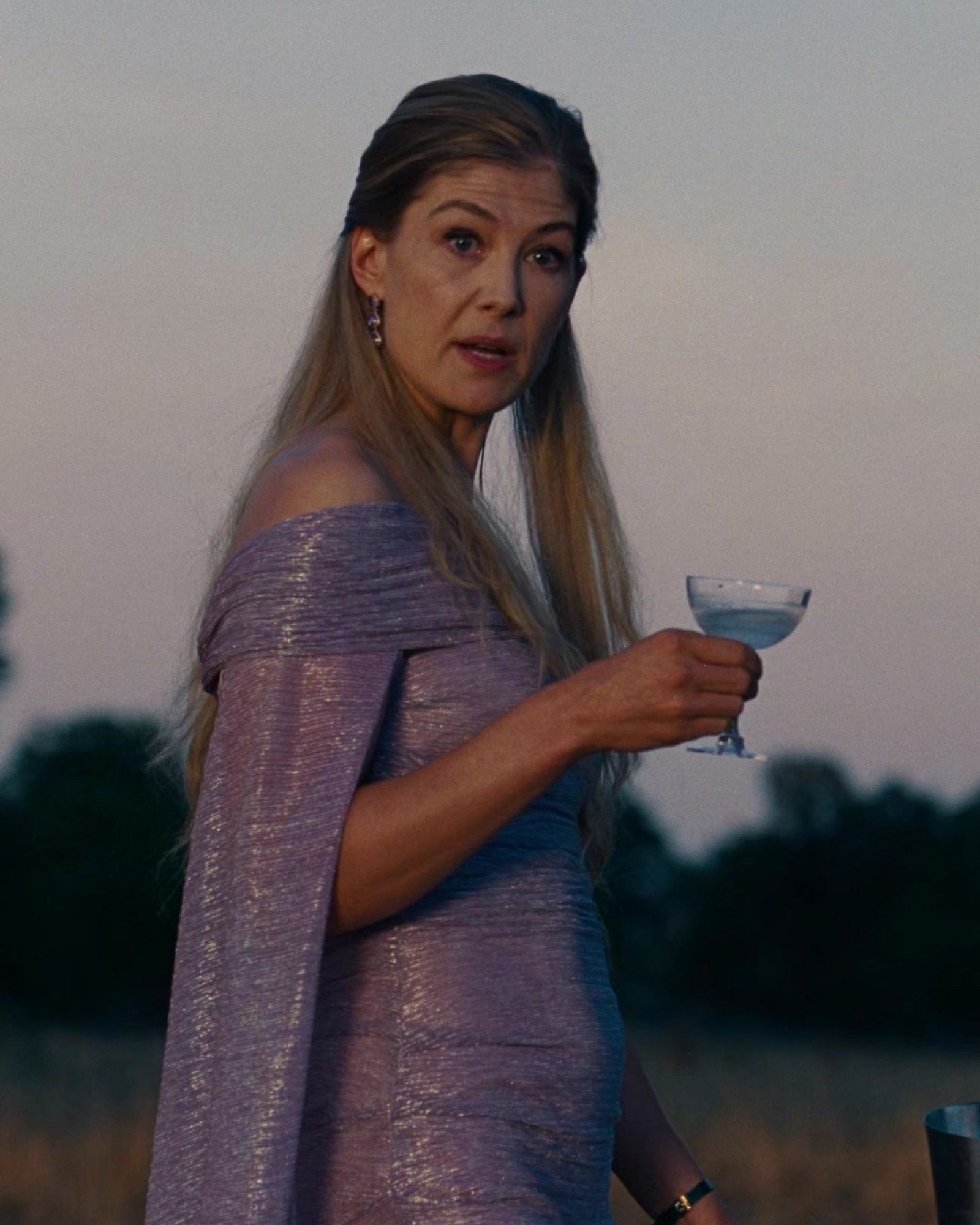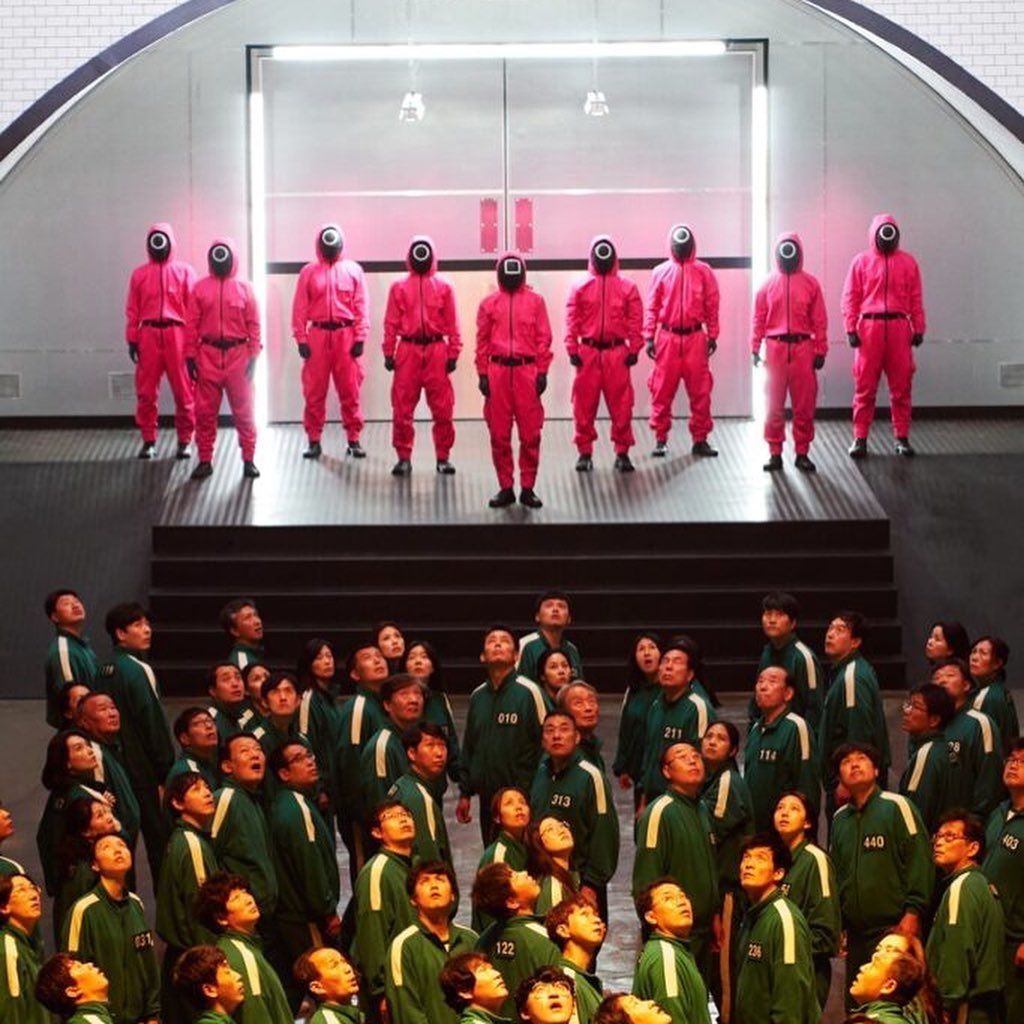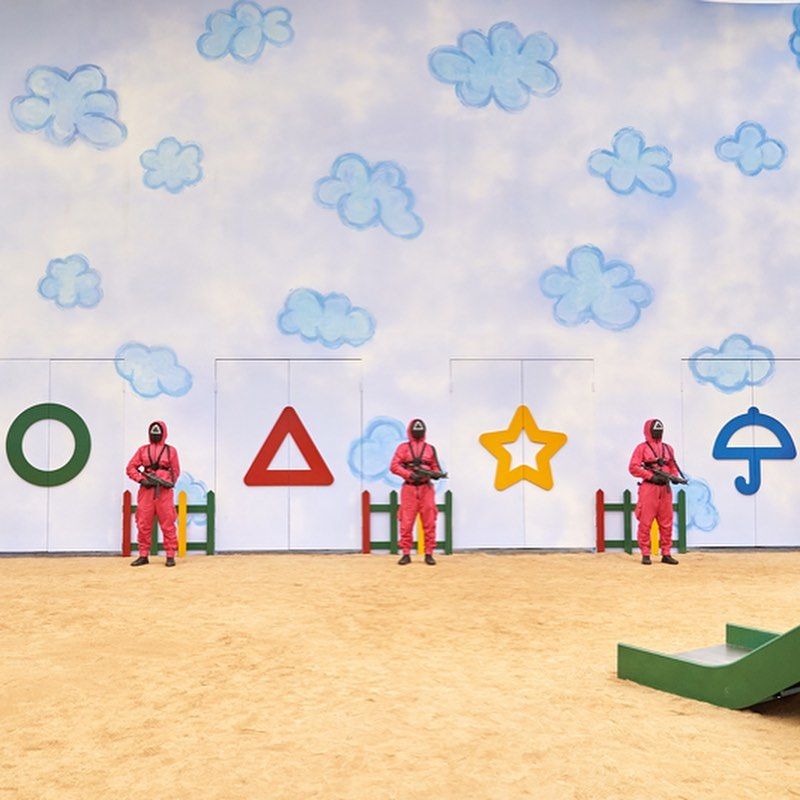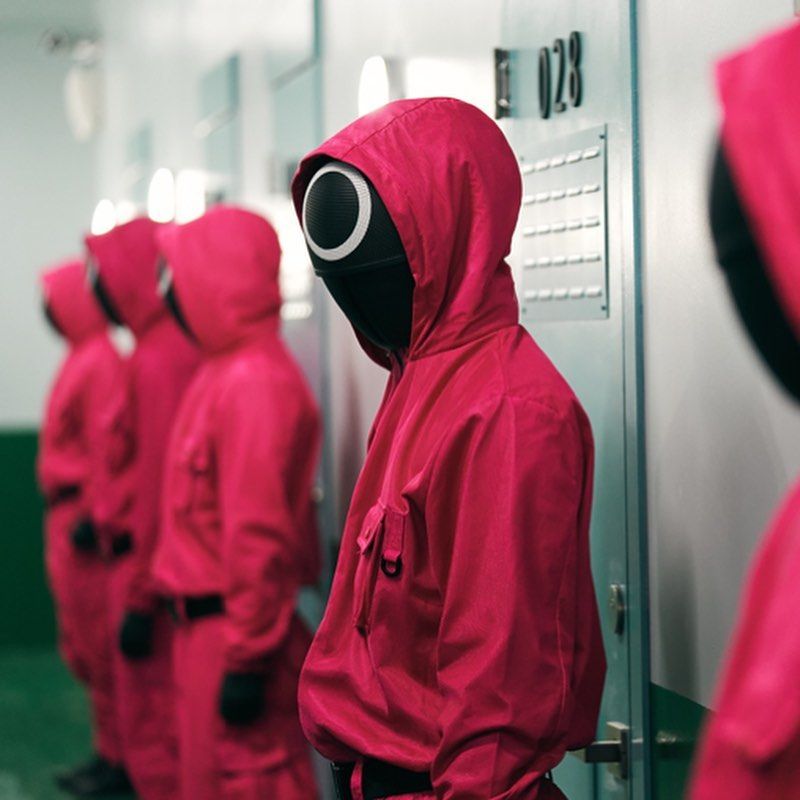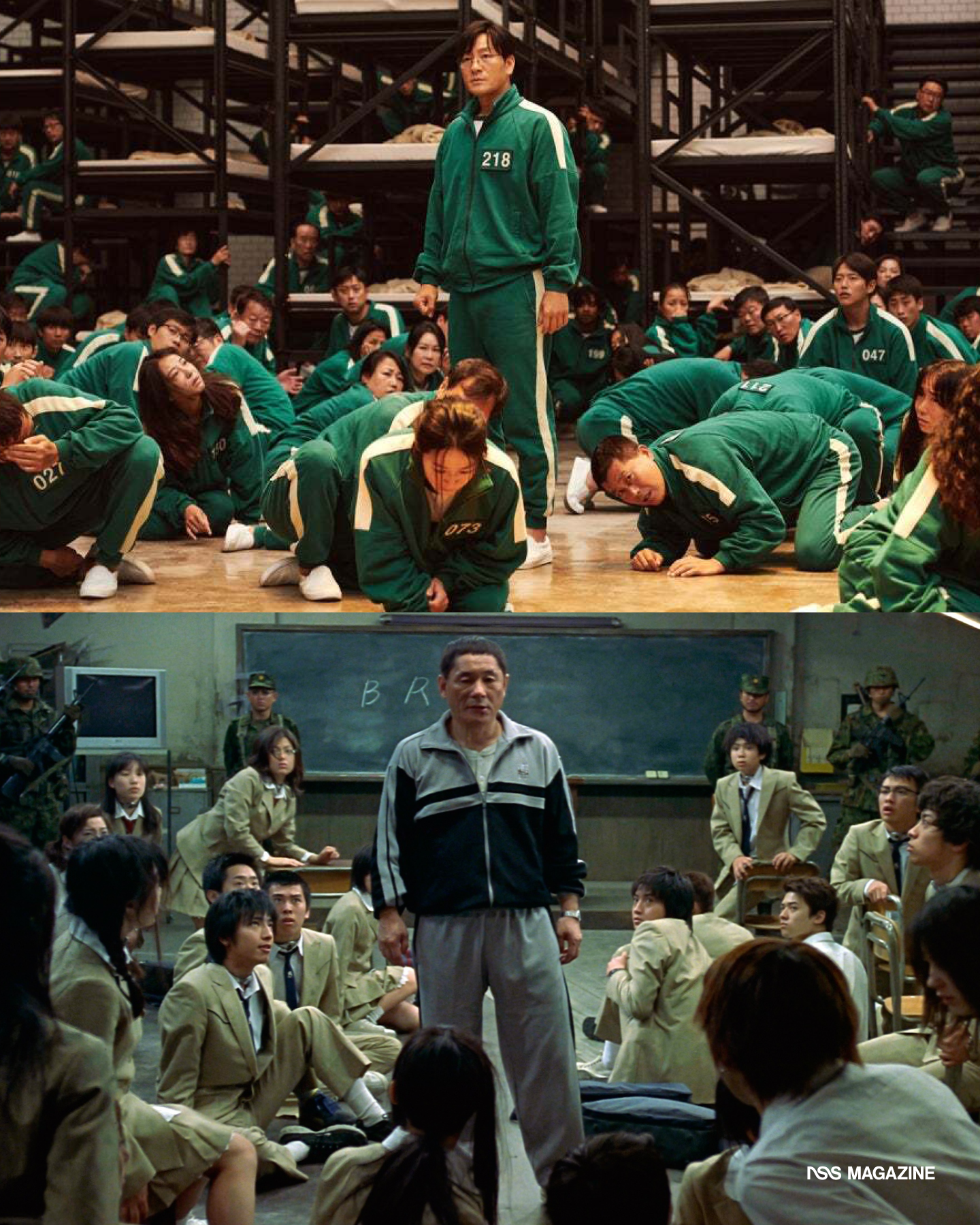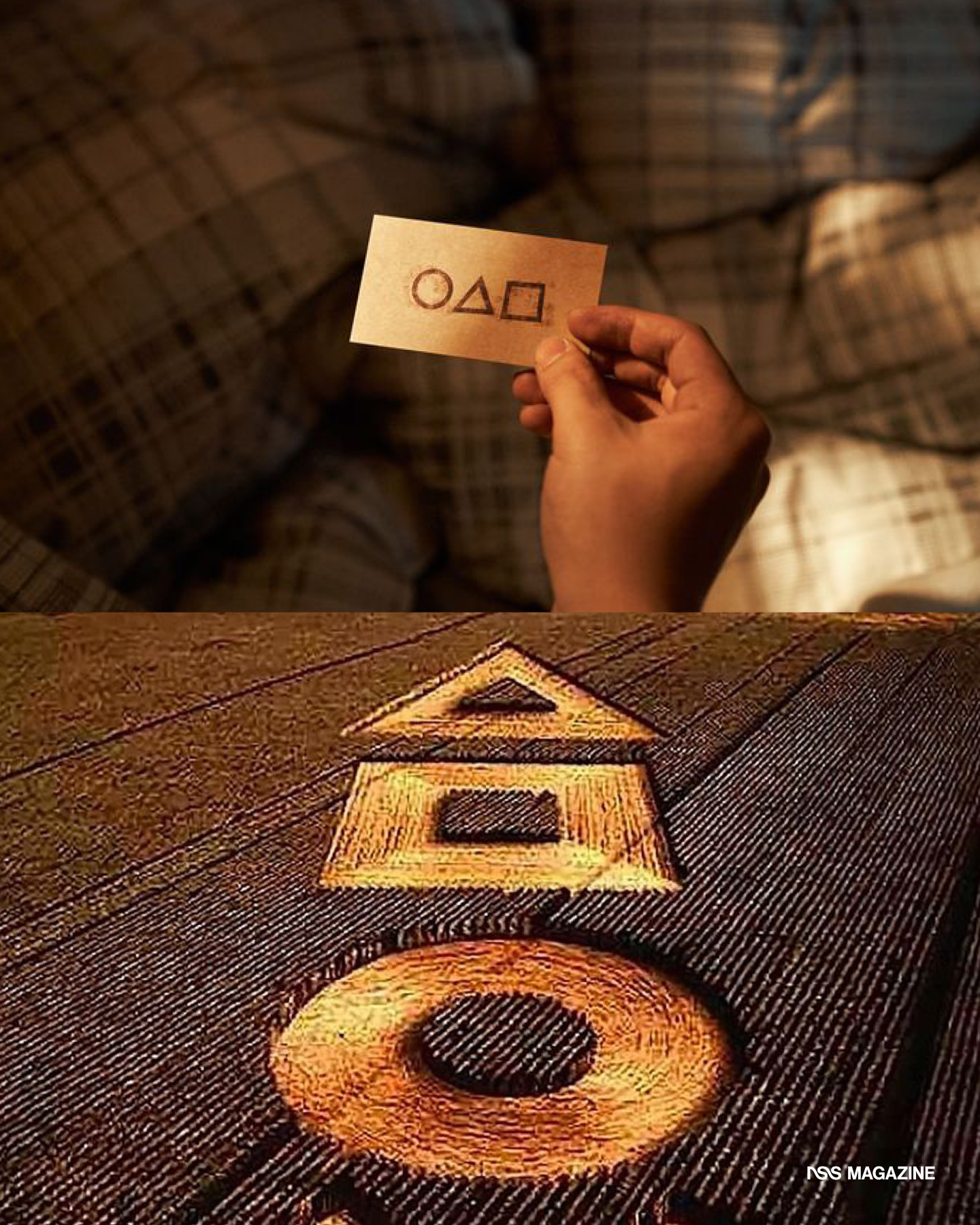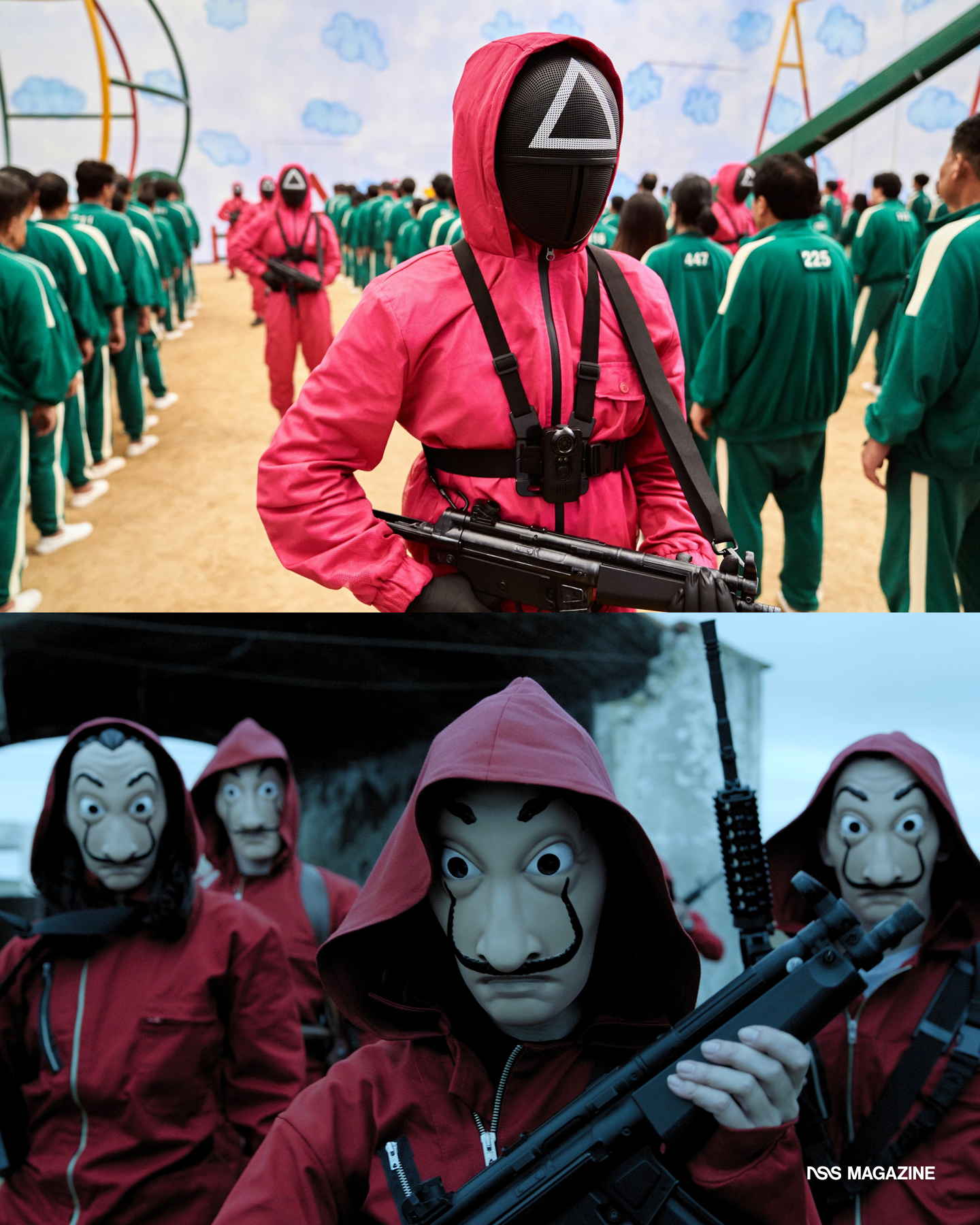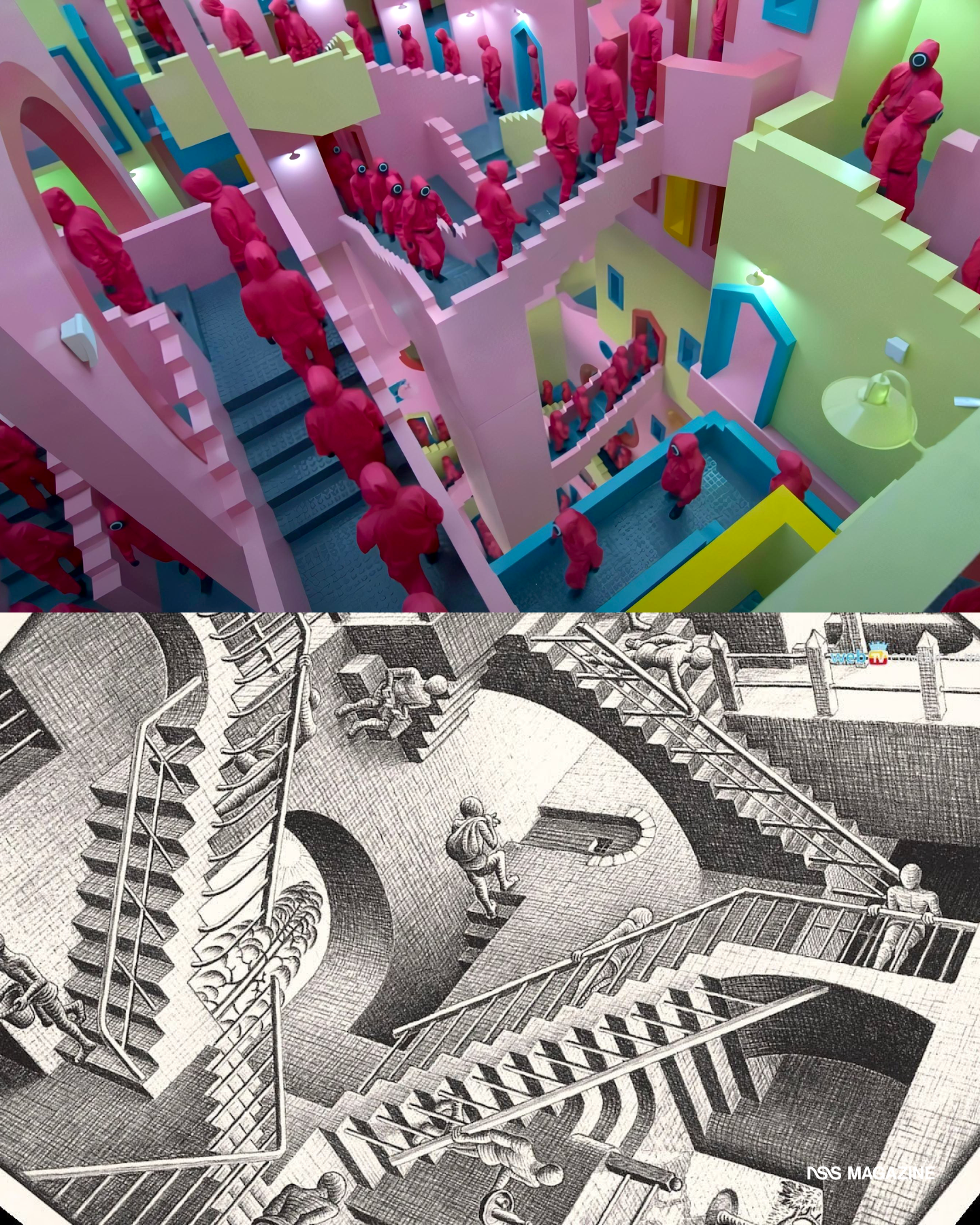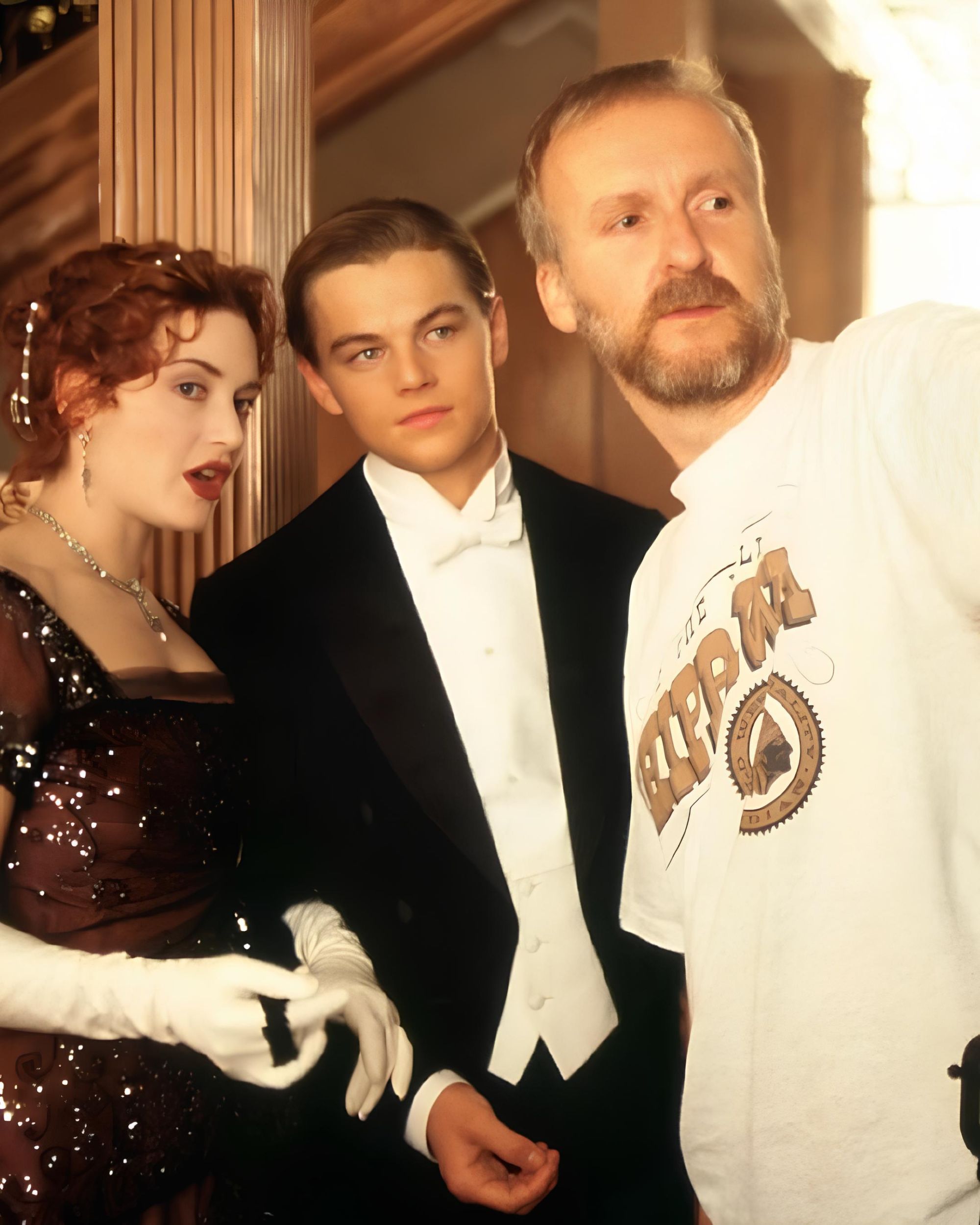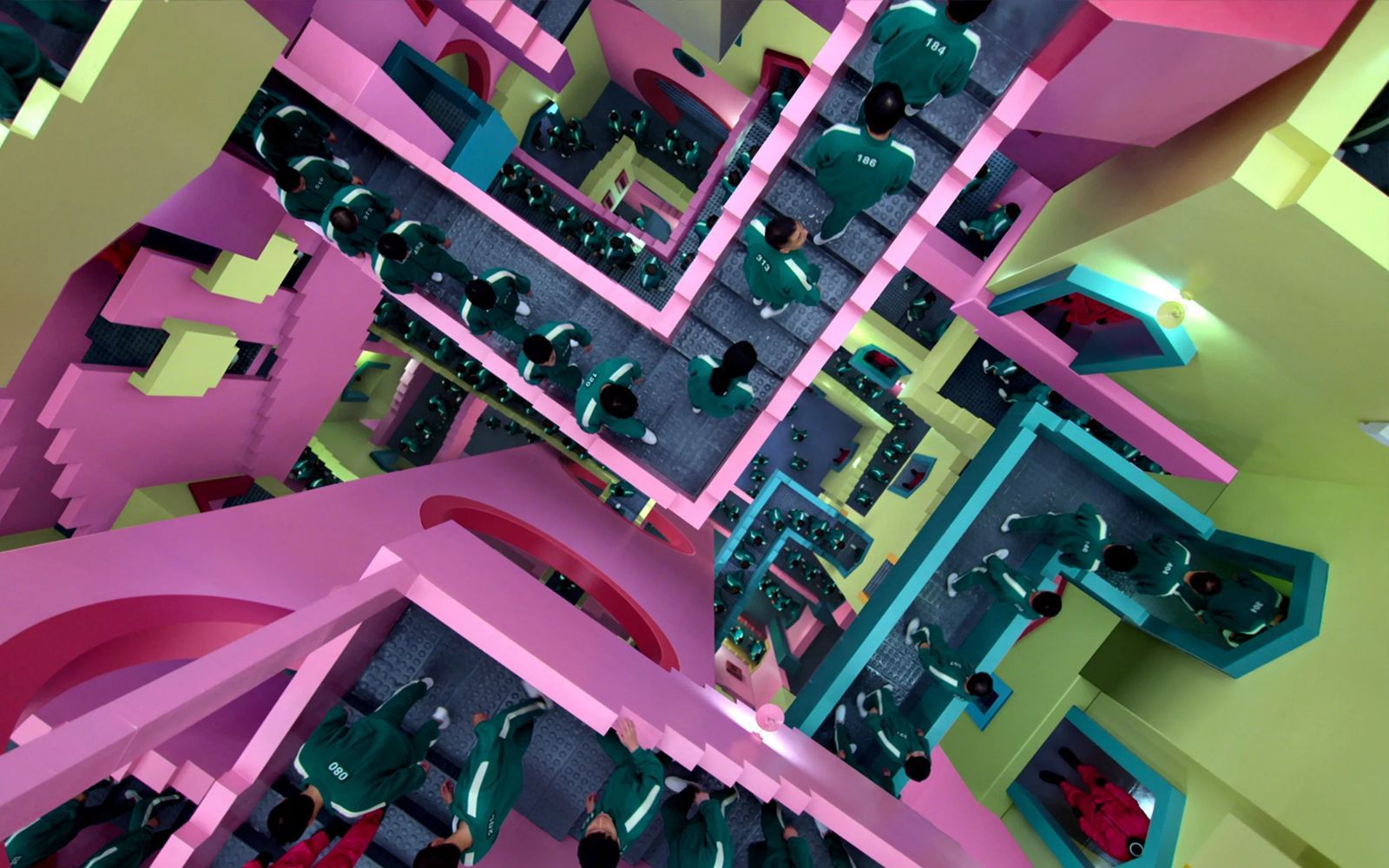
The aesthetics of Squid Game Between Escher, pastel colours and social criticism
The new Netflix hit has come from South Korea with Squid Game, written and directed by Hwang Dong-hyuk. The story is a survival drama somewhere between a game show, Battle Royale and The Hunger Games, and although the idea of a deadly competition is by no means new to film or TV, Dong-hyuk manages to make it seem like something incredibly fresh and innovative, especially given the general mediocrity of many Netflix productions. The reason for the success of the series, beyond its tight and expert storytelling and the great performances of the actors, lies in its visual approach that, without ever getting lost in excessive explanations, places the mass of the game's competitors led to slaughter in a perturbing and surreal scenario reminiscent of Magritte's and Escher's art, making the pink and green colours of the players' uniforms and the mysterious masked villains shine on the screen. "Mass" is the key word here because right from the start the story, which has its protagonist in the ludopate Seong Gi-hun, has a collective scale that includes hundreds of extras and helps give the story its epic scope. It is precisely the sheer number of contestants that provides a metaphor for a society divided between the oppressed and the oppressors - and also allows for scenes of unprecedented brutality, such as the One, Two, Three... Star! in the first episode.
But beyond the impeccable and quotable costume design, with the tracksuits and Vans-like canvas shoes on one side and the colourful suits and symbolic masks on the other, it is the contrast between the sets that makes Squid Game a small conceptual masterpiece. The outside world, the one outside the game, is dark and cold, while the one on the island is made up of pastel colours and childlike atmospheres that often combine with scenarios that directly quote surrealist art. This contrast between two worlds is certainly nothing new in South Korean cinema and TV, we have seen it in the works of Bong Joon-ho for example, where the contrast between social classes is always underlined by more or less obvious aesthetic choices: in Snowpiercer the train passengers are distributed according to their class, while in Parasite the main family lives in a basement flat that contrasts with the raised villa of the other family. Perhaps Squid Game's success lies precisely here, in its ability to combine two levels of interpretation that are as different as they are distant, bringing forth a world of references that crosses over from art to Money Heist (that's where we saw the red costumes of the guards), to some of the topos of Korean cinema, from splatter to detective stories.
But if we look at Hwang Dong-hyuk's series with a more superficial eye, there is the pop link with the symbols made famous by PlayStation or the logo that winks at that of TikTok, there is the blood of course, but above all there is the human drama of its protagonists and the emotional bond that is created with the audience. In this sense, despite a series of products that are often criticised, Netflix has once again managed to turn a Korean series without Italian dubbing into a success by playing with our memories and passions. Maybe it's because of its Takeshi's Castle aesthetic on steroids, but Squid Game's victory also lies in its ability to speak to a vast and diverse audience while remaining a series that can be enjoyed by all at the same level, a set of influences and ideas that play a little with the nostalgia factor and a little with the desire for binge-watching that has always been the secret ingredient of Netflix series.













